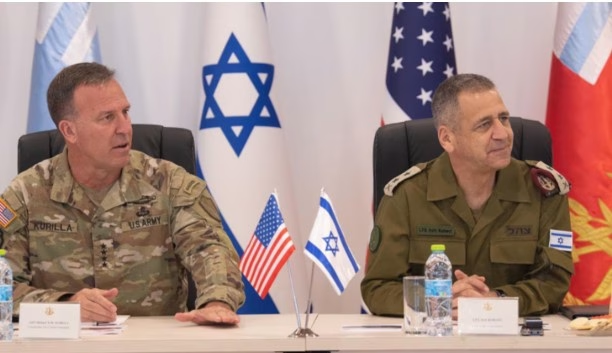Saturday night’s bombing campaign—launched under urgency and national security—shocked even seasoned analysts. But Steve Bannon, live on-air with the WarRoom, immediately sounded the alarm: “We need to go back to the beginning.” What was initially presented as a surgical, preemptive strike against Iranian nuclear ambitions has since spiraled into a cascade of questions, leaks, and finger-pointing. And Bannon wants answers.
Breaking news on Tuesday was that CIA Director John Ratcliffe warned Mossad that intelligence sharing would cease if Israel continued the war with Iran after President Trump’s ceasefire.
Go back to the beginning… See WarRoom Live From Saturday, June 21:
WarRoom Special: US Attack On Iran’s Nuclear Sites
Immediate Fallout: Where’s the Battle Assessment?
As the bombs fell, Bannon demanded an immediate Battle Damage Assessment (BDA) and full disclosure of the strike’s origin. “What was the target package? What were the commanders and pilots told? What was the intelligence that drove this? Why haven’t we heard a word about it?” he asked. His call came even before dust settled over the Middle East.
Bannon noted the use of Tomahawk missiles—technology dating back to the 1970s—as a baffling choice in modern warfare. “This is a 50-year-old weapons system. If this was so urgent, what drove that decision? The CIA? Mossad? The urgency suggests high-level intelligence. So let’s see it.”
The corporate media was posting stories late Saturday that contradicted President Trump’s reporting.
Intelligence Gaps and Silent Generals
By Tuesday, Karoline Leavitt reported that the leak on the initial assessment, which the media was using to discount President Trump, came from a “low-level staffer. ” Investigative journalist Jack Posobic from Human Events added more, revealing that DIA (Defense Intelligence Agency) had gathered the information and that the true responsibility lay with General Erik Kurilla, head of U.S. Central Command (CENTCOM).
So who has the real story?
Posobiec on Human Events with new details:
WarRoom quick clip:
“CENTCOM is the heart of D.C. command—the money flows through it,” said Posobiec. “So why haven’t we heard from General Kurilla? Why wasn’t there a formal briefing? Why is this being buried?”
According to Posobiec, who broke more details, the urgency that triggered the strike may have been linked to a phone call between Mossad leadership and former DNI John Ratcliffe.
Bannon’s Bigger Question: Who’s Running the Show?
Bannon framed the silence from CENTCOM leadership as “unacceptable” and suggested a dangerous lack of accountability. “This was a breathtaking operation. But there’s no transparency. No battle plan review. No explanation. We need to know who decided this was urgent—and why. Was it Mossad? Was it CIA? Or was it a backdoor decision from the National Security Council?”
Bannon has been talking about Centcom’s responsibility for days:
The WarRoom host warned that the American people are being shut out of a major geopolitical understanding with consequences that could spiral.
“The public was told Iran was days away from getting a bomb. That’s why we struck, right? Then show us the intelligence. Lay out the strike package. Identify the threat that forced our hand.”
Bannon, Posobiec, and others aren’t letting this go quietly. The calls for answers are growing louder, and General Kurilla’s silence is beginning to speak volumes.
